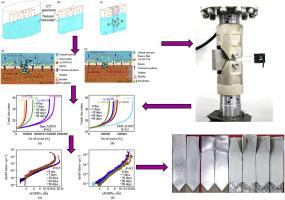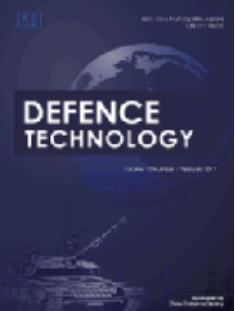AA 7075-T651搅拌摩擦焊接接头腐蚀辅助疲劳裂纹扩展行为:长时间海水暴露对显微组织和断裂特征的影响
IF 5.9
Q1 ENGINEERING, MULTIDISCIPLINARY
引用次数: 0
摘要
研究了16mm厚AA 7075-T651搅拌摩擦焊(FSW)接头的腐蚀辅助疲劳裂纹扩展速率(FCGR)。在恒定应力比为0.5的条件下,从基材和FSW接头中提取致密拉伸(CT)试样,以评估不同腐蚀暴露时间(0、7、30、60和90天)下的FCGR。利用光学显微镜和透射电镜对焊缝进行了显微组织分析。结果表明:瞬变TEM分析证实,FSW接头的临界应力强度因子范围(ΔKcr)低于母材,这主要是由于FSW焊接过程中焊缝区析出物溶解所致。FSW接头的疲劳寿命明显低于母材,但随着海水腐蚀时间的延长,疲劳寿命的差距逐渐缩小。暴露在海水中超过60天的试样显示,基材和FSW接头之间的疲劳寿命差异很小。这是由于与焊核相比,基材的腐蚀速度更快,导致形成更深的凹坑,从而促进裂纹的形成,加速疲劳失效。研究结果表明,延长腐蚀暴露时间会导致基材和FSW接头的疲劳寿命和裂纹扩展行为相似。SEM和EDX分析表明,AA7075-T651在起裂区存在腐蚀坑和锈蚀产物,在生长区存在延性条纹,在断口区存在带微孔洞的次生裂纹。在腐蚀和未腐蚀条件下,FSW接头在萌生区和生长区均表现为超细晶粒、光滑韧性断裂,在断口区表现为脆性断裂。本文章由计算机程序翻译,如有差异,请以英文原文为准。

Corrosion-assisted fatigue crack growth behaviour of AA 7075-T651 friction stir welded joints: Influence of extended seawater exposure on microstructure and fracture characteristics
This study investigates the corrosion-assisted fatigue crack growth rate (FCGR) of 16 mm thick AA 7075-T651 friction stir welded (FSW) joints. Compact tension (CT) specimens were extracted from both the base material and FSW joints to evaluate FCGR under varying corrosion exposure durations (0, 7, 30, 60, and 90 days) at a constant stress ratio of 0.5. Microstructural analysis of the welds was conducted using optical and transmission electron microscopy (TEM). Results indicate that the critical stress intensity factor range (ΔKcr) of FSW joints is lower than that of the base material, primarily due to precipitate dissolution in the weld zone during the FSW process, as confirmed by TEM analysis. The fatigue life of FSW joints was significantly lower than that of the base material, but with prolonged exposure to seawater corrosion, the gap in fatigue life narrowed. Specimens exposed to seawater for more than 60 days exhibited minimal differences in fatigue life between the base material and the FSW joints. This was attributed to the higher corrosion rate of the base material compared to the weld nugget, resulting in the formation of deeper pits that facilitated crack initiation and accelerated fatigue failure. The findings conclude that extended corrosion exposure leads to similar fatigue life and crack growth behaviour in both the base material and FSW joints. SEM and EDX analysis of AA7075-T651 revealed corrosion pits and rust products in initiation zones, ductile striations in growth regions, and secondary cracks with micro voids in fracture zones. FSW joints exhibited ultra-fine grains, smooth ductile fracture in initiation and growth regions, and brittle fracture in the fracture zones under both corroded and uncorroded conditions.
求助全文
通过发布文献求助,成功后即可免费获取论文全文。
去求助
来源期刊

Defence Technology(防务技术)
Mechanical Engineering, Control and Systems Engineering, Industrial and Manufacturing Engineering
CiteScore
8.70
自引率
0.00%
发文量
728
审稿时长
25 days
期刊介绍:
Defence Technology, a peer reviewed journal, is published monthly and aims to become the best international academic exchange platform for the research related to defence technology. It publishes original research papers having direct bearing on defence, with a balanced coverage on analytical, experimental, numerical simulation and applied investigations. It covers various disciplines of science, technology and engineering.
 求助内容:
求助内容: 应助结果提醒方式:
应助结果提醒方式:


